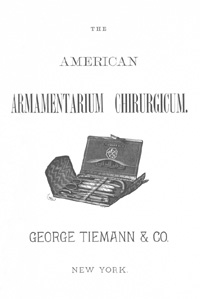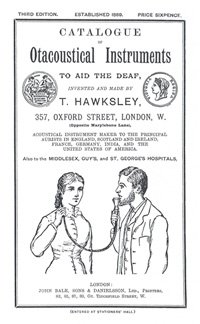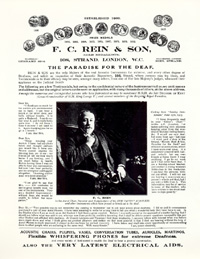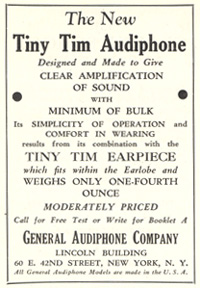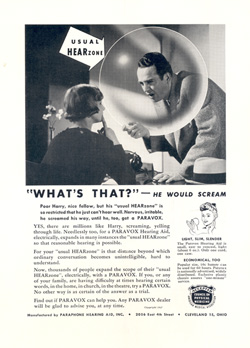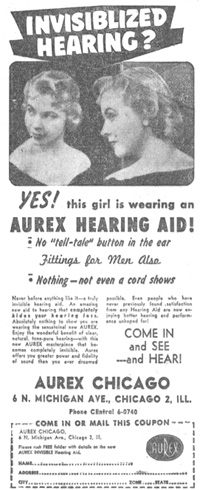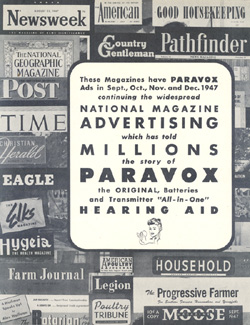Single Page View
Marketing of Hearing Devices
Early marketing efforts for hearing devices in Europe and the United States were confined to trade and medical catalogs with limited mass market advertising.
|
| Title page of The American Armamentarium Chirurgicum, 1889 |
| This 800+ page Tiemann & Co. catalog offered the most comprehensive listing of medical and surgical instruments and equipment available in the late 19th century. Included in the aural section were a variety of ear trumpets and conversation tubes. |
|
|
| Hawksley Catalogue of Otacoustical Instruments, 3rd edition, 1895 |
| The Hawksley catalog sold for a sixpence and featured a wide assortment of hearing devices. Aids were divided by classifications, such as sound collectors, disguised aids, conversation tubes, bone conduction aids, and table instruments. |
|
|
| Advertisement for F. C. Rein & Son |
| F. C. Rein & Son, founded in London in 1800, was one of the first and most prominent manufacturers of hearing devices in the 19th and early 20th centuries. |
|
|
| Hawksley advertisement |
| Advertisements like this for T. Hawksley Ltd. frequently appeared in medical journals, alongside advertisements for schools for the deaf, correspondence classes, and homes for deaf children. |
|
Marketing directed at the consumer was evident by the 1930s and 1940s when hearing aid advertisements were noted in popular magazines such as Life, the Saturday Evening Post, Newsweek, National Geographic and Colliers, and in newspapers.
|
| In 1933 the General Audiphone Company advertised its “Tiny Tim Audiphone” in The Volta Review, a journal published since 1910 by the Alexander Graham Bell Association for the Deaf and Hard of Hearing. Though now a research and scientific journal covering the field of hearing loss, The Volta Review was initially an illustrated monthly magazine for educators and parents of the deaf. |
|
|
| Paravox and other manufacturers tried to appeal to consumers by creating familiar characters in their advertisements. In this ad, “Poor Harry” is nervous and irritable, screaming through life, until he gets a Paravox hearing aid. |
|
|
| This Aurex advertisement ran in the Chicago Daily Tribune in 1950. |
|
|
| This Paravox announcement from 1947 publicized the many national magazines in which Paravox ran advertisements. The magazines included both general interest titles such as Newsweek, Time, and The Saturday Evening Post, and more specialized journals such as the Poultry Tribune, The Progressive Farmer, the Elks Magazine, and the Christian Journal. |
|
Continued
1 | 2 | 3 | 4 | Next >>

